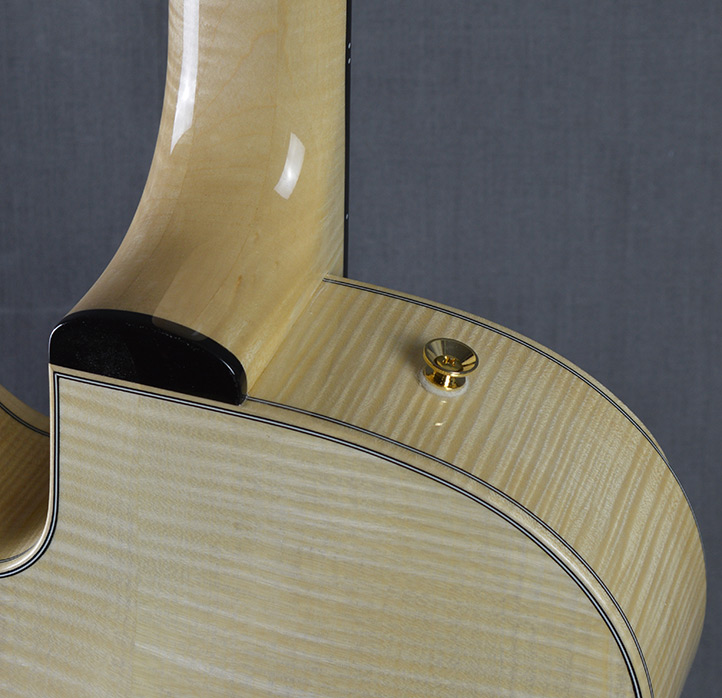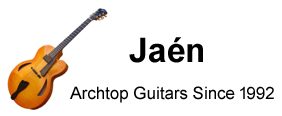Zebrano carved back, bent zebrano sides.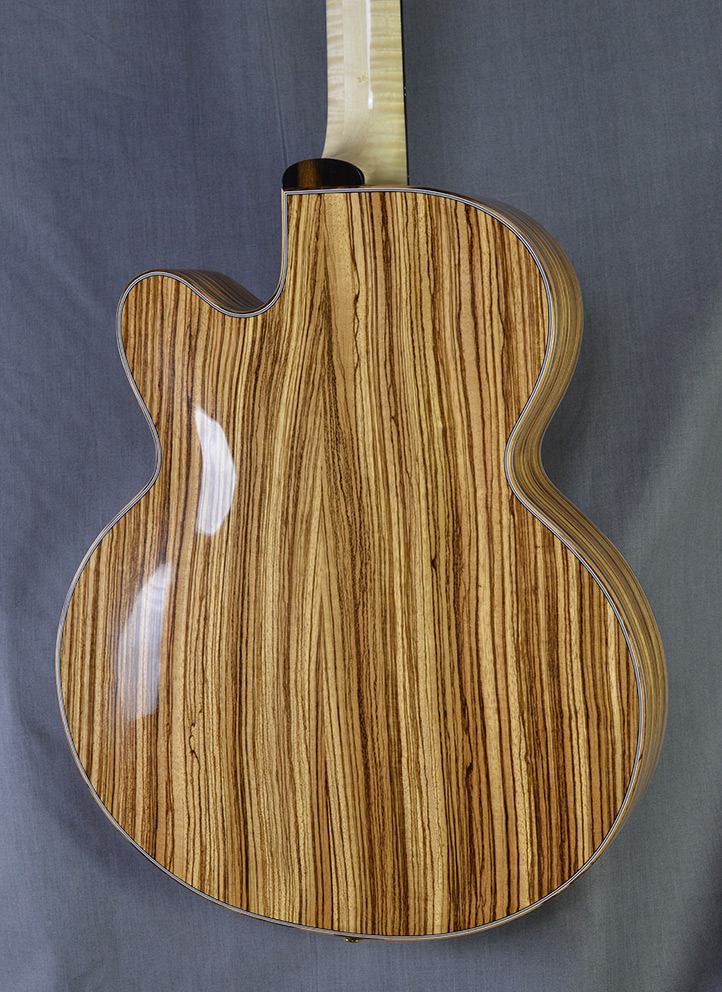
The soundhole is located here. The most traditional f-holes weaken the top a lot, and that is a problem for this guitar, with its very thin carved top.
European spruce top, with X bracing:
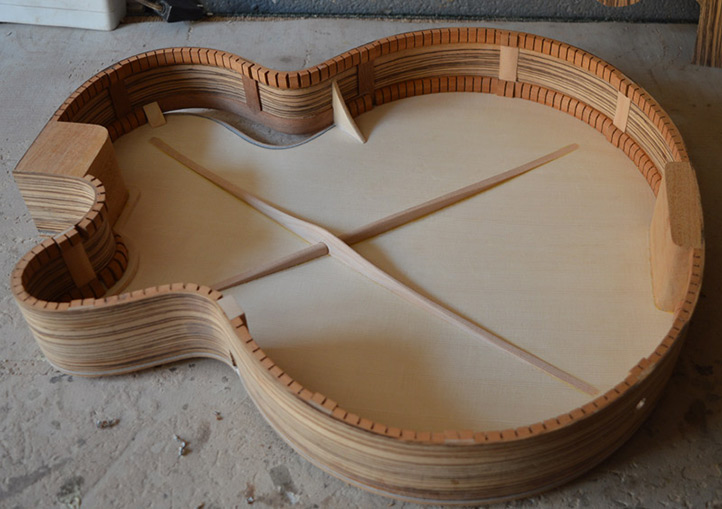
European curly maple neck, with 25.5″ (648 mm) scale. The bone nut has a width of 1 11/16″ (43 mm). The fingerboard is made of ebony, with stainless steel frets (Jescar 47104SS). The neck joins the body at the fifteenth fret; this is more convenient than conventional 14-fret designs.
There are two carbon fiber bars at both sides of the truss rod nut access hole, reinforcing this vulnerable area. There are two more at the other end, at both sides of the barrel nut, that avoid the "14th fret hump" (it should be called "15th fret hump" for this guitar that has 15 frets out).
The bindings are made of zebrano wood, with plastic purflings. The side purfling (the one that separates the binding from the side) splits up at the soundhole area.
Peghead overlay made of clear/dark ebony. It fits very light Gotoh Stealth machines, embedded into the peghead as shown in the second photo.
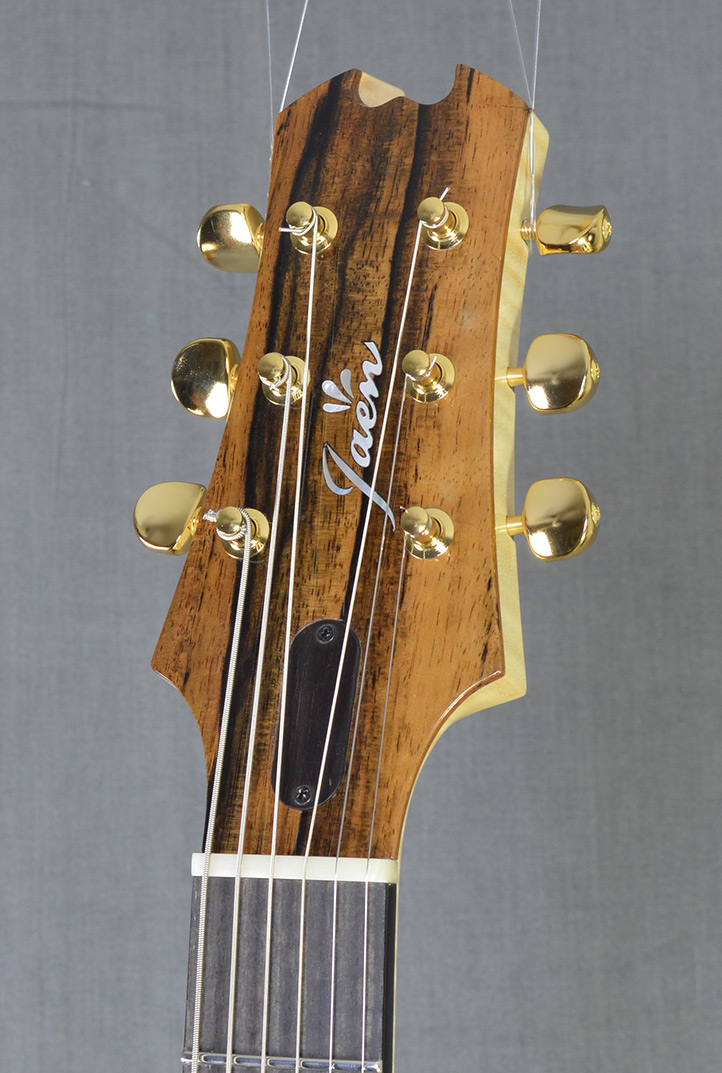
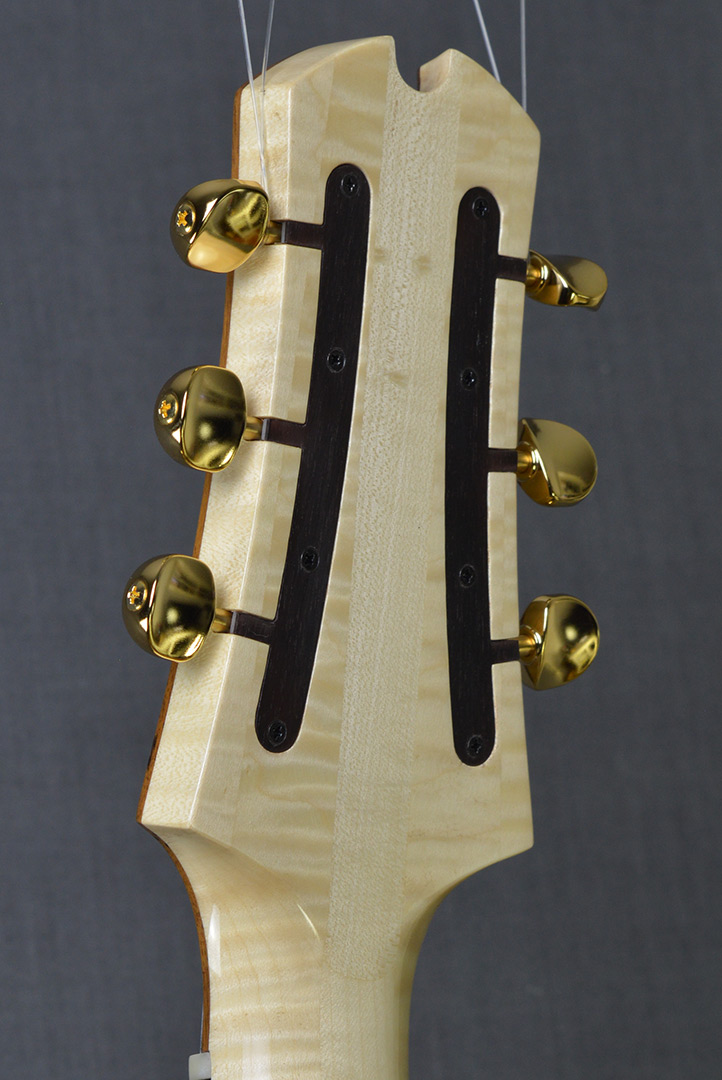
The tailpiece is made of ebony. I redesigned this component for the Siracusa models, with large brass pieces embedded inside it. It is a design of which I am particularly proud:
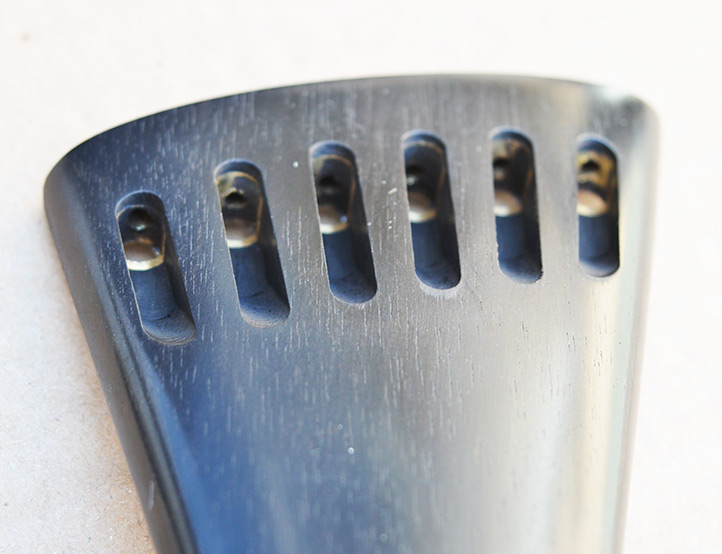
The bridge in this guitar is very light (around 12 grams). It is made of ebony, its height is adjustable, it is compensated, and its foot is hollow. It uses graphite inside the saddle to increase its stiffness. This guitar has a bridge with a single foot, but there are other Siracusas with two feet. They are all explained
here.
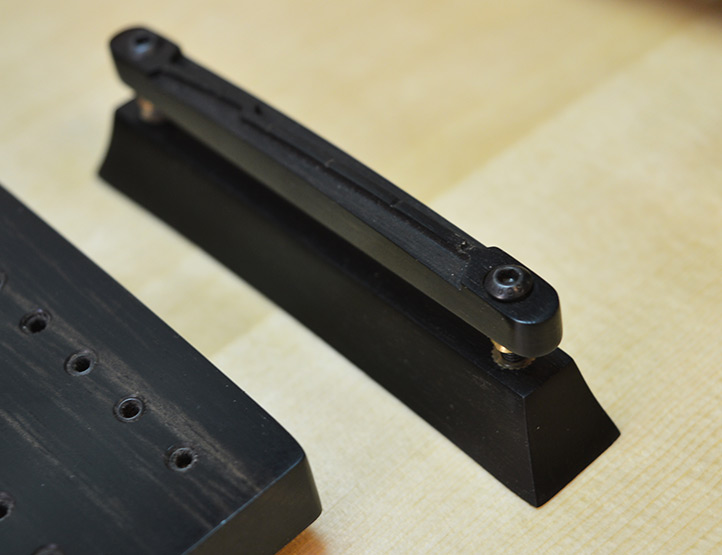
The pickups are designed specifically for this model. They are made of wood (ebony in this case) and are mated to the pickguard using the fingers that the latter has. They also have a
dog-ear projection under which the pots are located. This is a very convenient position for the player. And they have three terminals, so they can be used as single coils.
Internally they are high-impedance units. I don't like the floating pickups that, mainly due to the space limitation, have coils with few turns, being harsh and thin. These are just the opposite. They also have adjustable polepieces at both coils, so you can use bronze strings if you want.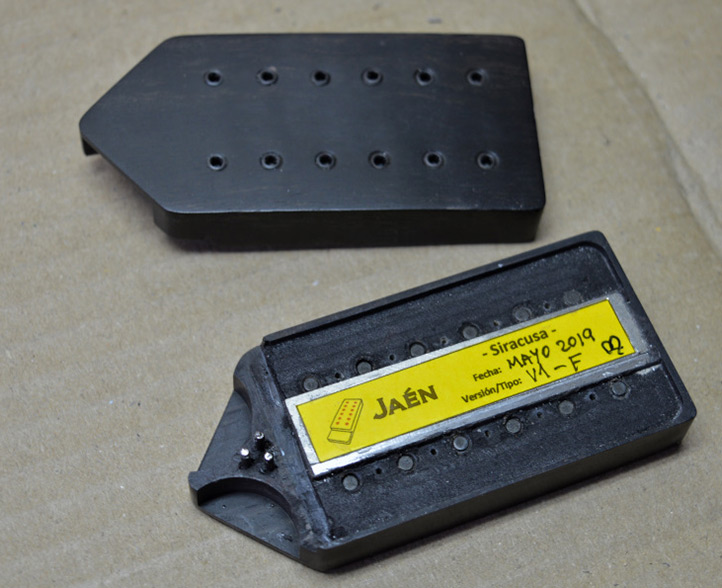
The pickguard is made of ebony, hollowed out to contain a carbon fiber skeleton. This supplies the necessary stiffness to support the two pickups. There is a printed circuit board below it, with the following components (fourth photo):
- Pickup connections with three terminals, that allow to use the pickups as single coils instead of humbuckers.
- Long rotational life potentiometers. More than 100.000 cycles in the version shown, a little more modern than the one on the guitar of the main photo. Their support and thumbwheel are shown on the third photo.
- SMD components: tone capacitors and "Treble Bleed" circuits that improve the tone at low volume. The capacitors have C0G dielectrics, free of piezoelectric effects.
- Pickup switch, small and high quality, with chicken head knob.
- Humbucker/single coil switch. If set as "single coil" and with the pickup switch in the middle position, the result will be a parallel humbucker.
- Fast connector for the wire that goes inside the guitar (last photo).
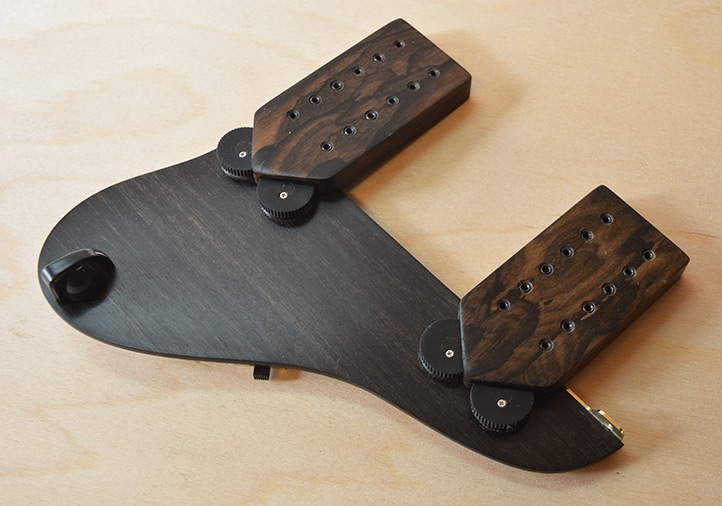
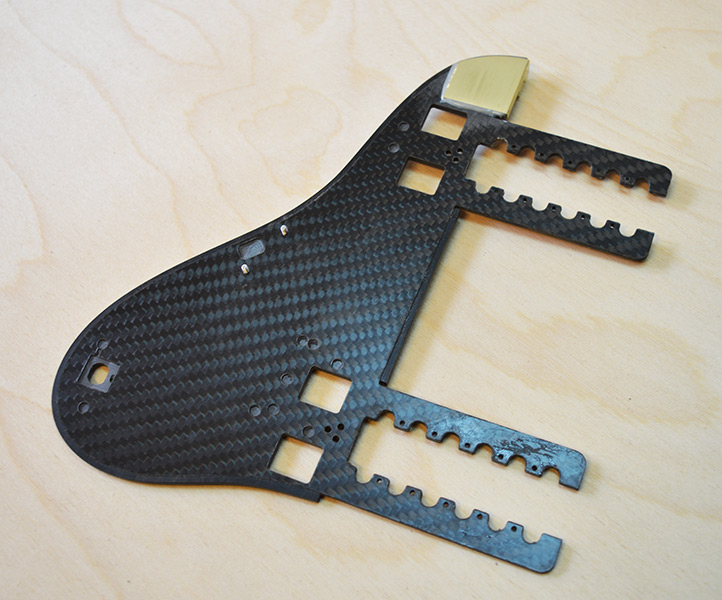
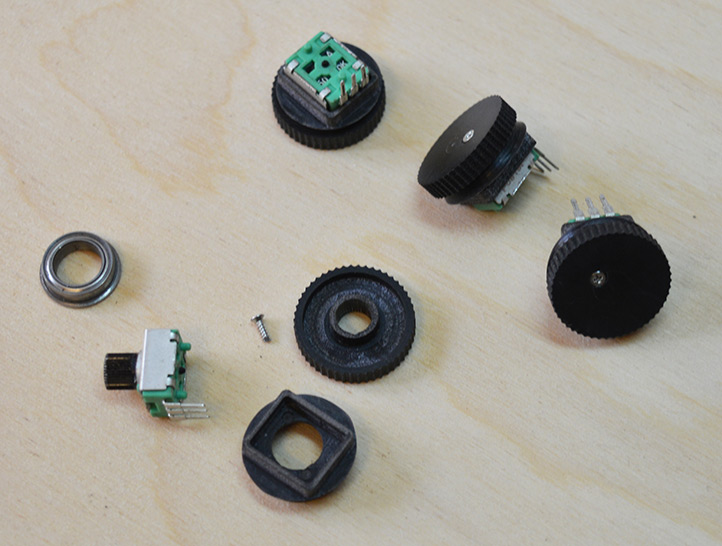
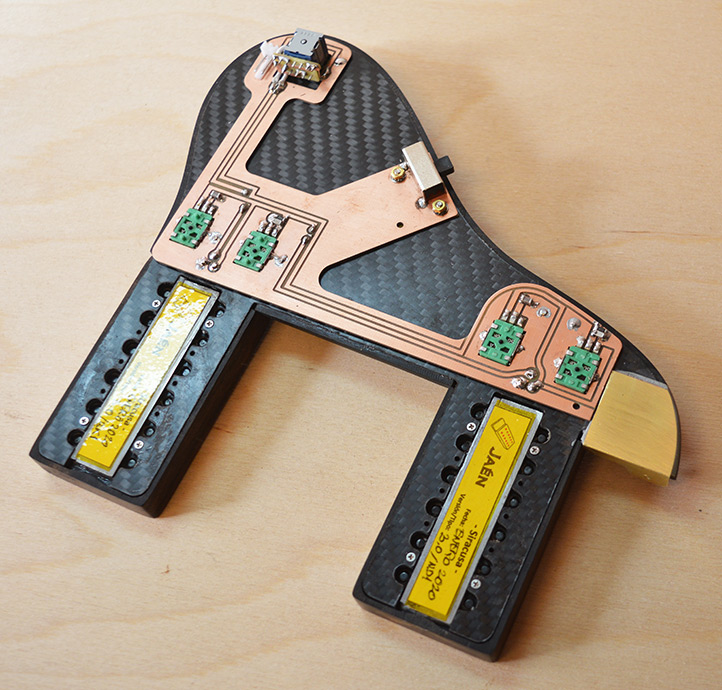
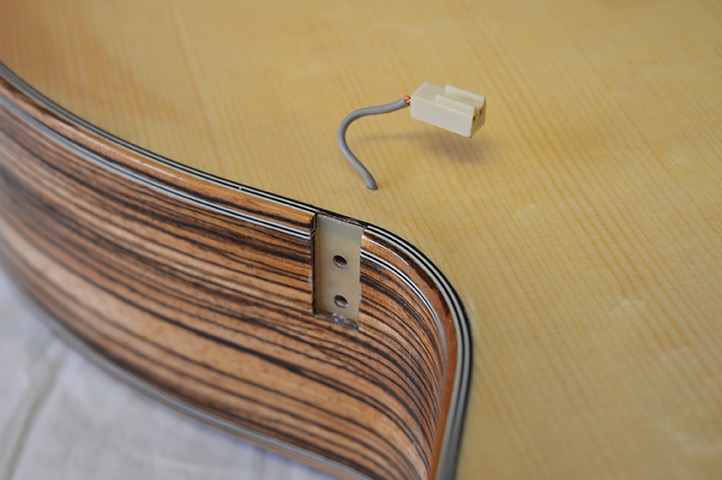
These pieces cover the machine head mechanisms and the truss rod cover access hole. They are made of a laminate of ebony wood and fiber glass. If they were solid ebony, they would be extremely fragile:
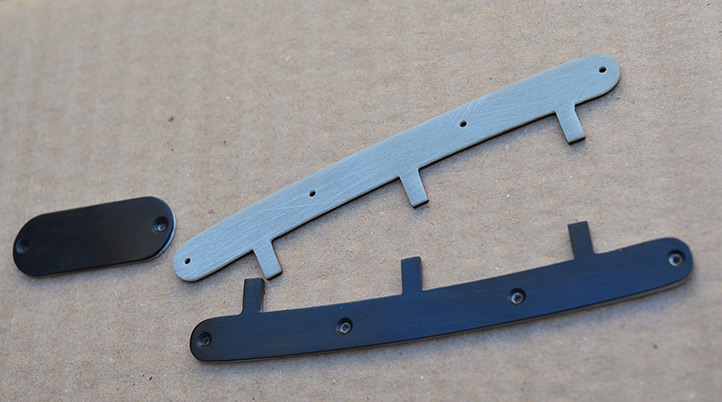
Nitrocellulose finish (Votteler), natural.
This "100% acoustic and 100% electric" model gives me the freedom to decide between both alternatives when it comes to small items such as the jack. I chose to install it here, at the side. This is a location quite common for solid guitars, and I think it has real advantages when compared to the common locations on acoustic guitars (usually through the tail block). I prefer the simple design, robust construction and smooth operation of electric guitar jacks.
The two supports that hold the pickguard in place are very tough. Both are inserted into tight fitted cavities cut into the sides of the neck and soundbox:
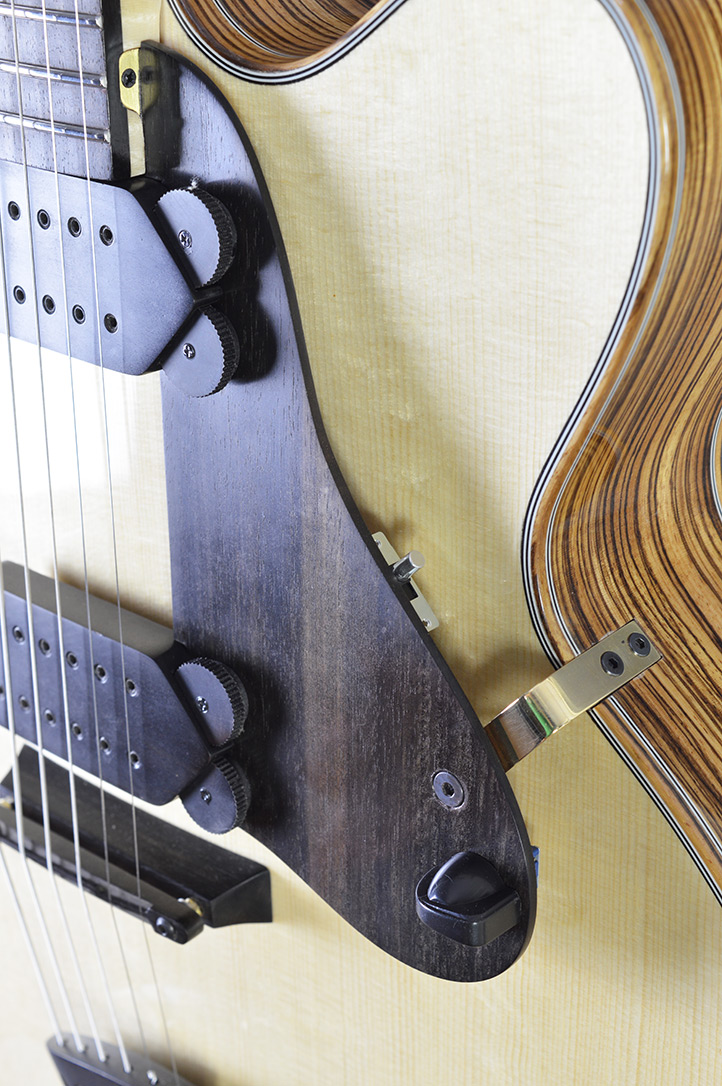
This "100% acoustic and 100% electric" model gives me the freedom to decide between both alternatives when it comes to small items such as the strap holder. I chose to install it here, at the side. This is a location quite common for solid guitars, and I think it has real advantages when compared to the common locations on acoustic guitars (usually the back and the heel). It has a reinforcement inside the soundbox, close to the neck block.
Note: This was a later improvement; the guitar shown had its strap at the back.